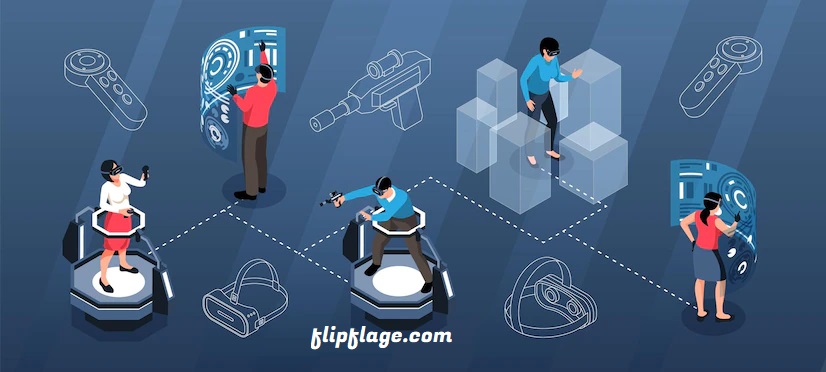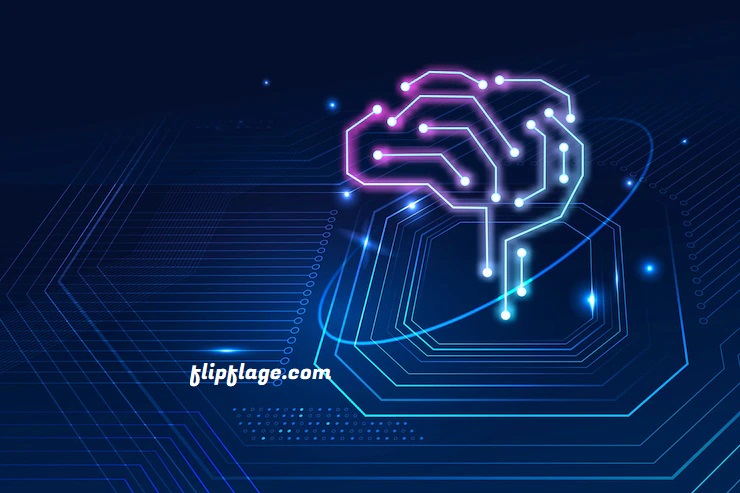The most recent technological advancements are paving the road for more connected enterprises. This, however, is merely the beginning. The technology trends of 2022 are brimming with “old acquaintances” that are evolving, as well as the most cutting-edge innovations that will further impact our daily lives, how we communicate, and how we work. This article will discuss in detail the Top 15 Biggest Trending Technology of 2022.
Despite the wide range of technology advancements forecasted for 2022, they all have one thing in common: tools and innovations aimed at accelerating digitalization and enhancing efficiency and growth for all types of businesses. Digital surroundings are becoming increasingly important for productivity and customer loyalty.
Top 15 Biggest Trending Technology of 2022
We examine the technology developments that will define 2022 and that you should be aware of.
- Decision Intelligence
- Edge Computing and Native Clouds
- Metaverse
- Low-Code Services
- Automation and Hyper-Automation
- NFT (Non-Fungible Tokens) with AI
- New Convolutional Neural Network Architectures: ConvNext
- Computer Vision and Pattern Recognition
- Predictive Analytics
- Distributed Companies
- Data Fabric
- Total Experience (TX)
- Sustainable Technology Trends
- Blockchain to outfit as Web3
- Quantum Computing
#1. Decision Intelligence

Decision intelligence is a relatively new field that is quickly growing in popularity. It is the ability to make intelligent decisions under uncertainty. Decision intelligence can be used in a variety of fields, such as business, marketing, and management.
One of the key benefits of decision intelligence is that it can help reduce the amount of time that is spent making decisions. It can also help you make better decisions by using data that is relevant to your situation. One of the key challenges that decision intelligence faces is that it is often difficult to know how to use it. You need to have a good understanding of the different types of data that are available to you.
In order to improve decisions, so-called “decision intelligence” uses a practical approach to decision-making.
Its purpose is to model each decision as a collection of procedures that can be learned, informed, and refined using intelligence and analytics. It’s the ideal complement to human decision-making, which it then automates using augmented analytics, simulations, and Artificial Intelligence.
#2. Edge Computing and Native Clouds
Edge Computing and Native Clouds are fast-growing technology trends that are helping to reshape the way businesses operate. They are different in many ways, but they share one common goal: to reduce the amount of data that needs to be transferred between different parts of a business.
![]()
Edge Computing is a technology that helps to offload tasks that can be done more quickly and efficiently on the edge of a network. This can include things like processing large data sets or performing complex calculations. Native Clouds are clouds that have been specifically designed to run applications and services natively.
Edge Computing is a new model of computing that is focused on delivering applications and data closer to the user, in the form of “native clouds.” Edge Computing is a way to combine the power of the cloud with the immediacy and flexibility of on-site computing.
Native clouds are Clouds that are built specifically to meet the needs of edge devices. They are designed to be more responsive and agile, providing the performance and security that edge devices need. Native clouds also support a wide range of applications and services, making them a powerful tool for businesses and consumers.
The requirement for sovereignty and edge computing has propelled cloud adoption in enterprises around the world.
Within three years, cloud-native systems are expected to account for 95 percent of new digital projects, according to Gartner. Companies that have already adopted this cloud paradigm have seen their business, operational, and governance models dramatically altered. Edge computing is intended to combat cloud centralization by bringing capabilities and resources closer to users in real-time.
#3. Metaverse
We couldn’t leave it off of this list of trends because it’s been dubbed the “megatrend” that will usher in a new era and have the same impact as the Internet.

This digital universe, in which physical and virtual reality coexist in a shared online space, will fundamentally alter how we work, shop, interact, and have fun. Companies will benefit greatly from the metaverse, which will include everything from growing their social presence to office work, payments, healthcare, buying and selling things, and so on.
Metaverse is a new online platform that allows users to create, share, and manage their online identities. Metaverse is also a platform for exchanging digital assets, including virtual items and currencies. Metaverse is open source, meaning that its code is available for anyone to review and contribute to.
#4. Low-Code Services
Low-code services are likely to be one of the major technology trends in 2022, as we get closer to the democratization of data and technology. We’ve seen how a growing number of society’s skills and resources have been made available to support innovation in recent years.

Lack of experience or competence has fueled the rise of self-service and “low-code” solutions, which, when combined with AI and IoT infrastructures, are becoming more popular among businesses without their own server or cognitive code. As a result, these no-code interfaces will gain traction, removing obstacles to service access.
#5. Automation and Hyper-Automation
Gartner estimates that the global market for automation software will reach $600 billion by 2022. Automation allows us to reduce the amount of time we spend completing certain operations while also improving their accuracy. In the year 2022, we will continue to install tools and developments that will help us speed up the completion of several duties.

We will also enhance our efficiency in performing them and continue to liberate ourselves from jobs that can be totally automated so that we can focus solely on those for which we can deliver a distinct value.
Furthermore, hyper-automation will aid in improving decision-making without sacrificing quality, geometrically increasing speed and lowering operating expenses by up to 30%.
#6. NFT (Non-Fungible Tokens) with AI
The application of Artificial Intelligence for the construction of NFTs will be a prominent trend this year. Once trained with the appropriate dataset, models like GANs (Generative Adversarial Networks) are capable of producing fresh material. These networks have the ability to create one-of-a-kind and exclusive works of art, which makes them particularly appealing in the field of NFTs.

NFTs are digital assets that are revolutionizing the online market by allowing users to revalue products or goods that have previously circulated for free on the network.
The Internet has made material easier to consume, but it has also made content protection more complex. Creators may access new technologically sophisticated revenue streams and interact with customers and followers in unique ways thanks to NFTs, blockchain-based registries that prove digital ownership of various goods such as art, collectibles, or music.
#7. New Convolutional Neural Network Architectures: ConvNext
Many research groups have revealed new topologies that disrupt the typical way we utilize convolutional neural networks thanks to strategies learned in the development of hybrid architectures employing “Vision Transformers.” This is the case with the Facebook research-based new network: ConvNext, a ConvNet for the 2020s, has outperformed the “Vision Transformers” architectures using solely convolutional neural networks (ImageNet Benchmark).

The appearance of Transformers in the field of computer vision has boosted neural networks’ ability to extract features from images and their ability to model long-range connections. As a result, hit rates in classification, object detection, and image segmentation tasks have increased.
#8. Computer Vision and Pattern Recognition

This unlocking of information from picture and video translation has a tremendous influence on customers, but it is merely the beginning. It has numerous uses in telemedicine and security, such as the detection of medical problems.
Computer vision is still progressing and making major strides. We’re seeing more and more examples of how this technology is assisting businesses in improving their service.
#9. Predictive Analytics

When it comes to efficiency, predictive analytics plays a critical role in data analysis and data lake consolidation. It will surely be at the forefront of innovative initiatives, particularly in the IT sector. It will also be critical in advancing IoT technology and cybersecurity.
Although it is not a new trend, it deserves to be included in the 2022 list since predictive analytics tools will continue to modify the rules of the game in many industries.
#10. Distributed Companies
The advantages of these dispersed business models are already being recognized, and revenue growth is predicted to be 25% quicker than traditional methods.

Many businesses are still adjusting to hybrid work arrangements or transitioning to them. Many of them have been forced to take them on by the epidemic, but the choice to keep them is being made carefully and firmly. The emergence of remote or hybrid work models has accelerated the global shift to dispersed work.
#11. Data Fabric

The advantage of Data Fabric is the ability to utilize analytics to learn and indicate where it should be used or adjusted on its own. This is a huge accomplishment since it can cut data management time in half.
A data structure, also known as a data fabric, allows for the flexible and reliable integration of data sources across platforms and users inside an organization. It enables data to be accessible from anywhere and to adapt to the needs of the user.
https://www.youtube.com/watch?v=4qGyygQscmM
#12. Total Experience (TX)

The complete experience is defined as offering total experience management to increase consumer and employee trust, satisfaction, loyalty, and advocacy. This combination of “Xs” will indicate the possibility of improving company performance and driving growth.
Total Experience is a marketing approach that combines employee, customer, and user experiences, as well as multi-experience across several touchpoints.
#13. Sustainable Technology Trends

Many businesses have chosen to make minor and large changes, with a focus on lowering CO2 emissions (for example, using Blockchain), migrating to the cloud, clean process and product innovations, process and consumption optimization, recycling, the relevance of metrics, and so on.
We’ve saved it for last, not because it’s the least important, but because it is. It’s possible to classify it as a trend that incorporates many others, and we’ve seen how business models have shifted dramatically in recent months.
#14. Blockchain to outfit as Web3
Web3 will most likely take a decade to overtake Web2, but it will emerge as one of the next general-purpose technologies to have a significant influence on future business models and economies. Non-fungible tokens, cryptocurrencies, stablecoins, and central bank digital currencies will all grow in popularity, as will decentralized autonomous organizations, decentralized finance, and self-sovereign identity.

Web 3.0, often known as Web3, will be the distinguishing characteristic of the next significant evolution for the internet in 2022.
While Web 1.0 was primarily read-only’ stage of the Internet in the early 1990s, and Web 2.0 was the more participatory era that followed from roughly 2004, the core of Web3 will be the widespread adoption of blockchain-based applications – underpinned by the principles of decentralization and openness.
#15. Quantum Computing
Quantum computing, a type of computing that takes advantage of quantum phenomena like superposition and quantum entanglement, is the next notable technological trend. Because of its capacity to readily query, monitor, analyze, and act on data from any source, this fantastic technological trend is also involved in avoiding the spread of the coronavirus and developing viable vaccines. Banking and finance is another industry where quantum computing is being used to control credit risk, high-frequency trading, and fraud detection.

We’ve been covering quantum computing for a while, but we’re just getting started, with huge breakthroughs expected in the coming years on both the software and hardware sides, with a new quantum computer expected to have 433 qubits by the end of 2022 and 1121 qubits in 2023, breaking the 1000-qubit barrier. Analysts are also seeing that use cases are becoming more tangible, and that development will only accelerate exponentially in the next years, continuing the surge in quantum computing activity and investment that began in 2015.
Quantum computers are currently hundreds of times faster than traditional computers, and major companies such as Splunk, Honeywell, Microsoft, AWS, Google, and others are working on quantum computing breakthroughs. By 2029, the worldwide quantum computing business is expected to generate sales of more than $2.5 billion. You’ll need knowledge of quantum physics, linear algebra, probability, information theory, and machine learning to create a name for yourself in this new trending technology.
Conclusion
Around the world, technology is advancing at a breakneck pace. Everything is going digital, and machines are taking the place of people. Robots now do all of the heavy liftings. Technology today is growing at such a quick rate that it enables speedier change and advancement, driving the rate of change to accelerate to the point where it will eventually become exponential. However, it is not just technological trends and top technologies that are changing; much more has changed this year as a result of the breakout of COVID-19, which has made IT professionals recognize that their job in the contactless world of the future will not be the same. In 2021-22, an IT professional will be continually learning, unlearning, and relearning. We hope this Top 15 Biggest Trending Technology of 2022 will bring you up to speed.
SPONSORED





